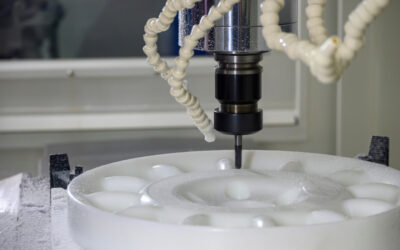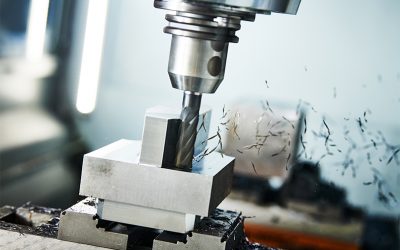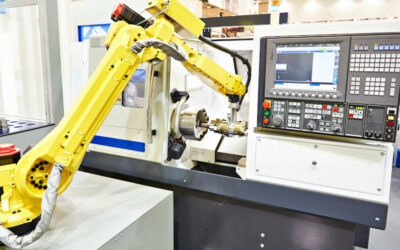Professionals use CNC machining to shape acrylic for a variety of industrial uses. While it allows for flexible use, acrylic materials frequently break down when compressed or stretched. This means that caution is required when shaping or cutting it. CNC machining is the best tool for acrylic because it works quickly and with precision. Here are eight important things to know about CNC machining acrylic.
1. Acrylic Is Fragile
While acrylic is strong, durable and versatile, it’s also quite fragile. You have to careful when shaping it or you’ll get unwanted breakages. This is a common problem when using conventional machining processes. With the wrong amount of excess force, you could break off more than you want, potentially ruining a project. In particular, problems can arise due to compressive and tensile forces. This means you should always approach acrylic cutting cautiously.
2. Acrylic Has Many Uses
Acrylic is a desirable material because you can use it in many different ways. It is commonly used in the optical and vehicle industries. Before acrylic can become a particular product, you must cut it to the proper shape. This is where problems occur because of the material’s aforementioned delicate side. Fortunately, CNC machining can handle acrylic easily since it cuts quickly and accurately. You can input the parameters into the machine to create the acrylic shapes that you need.
3. Less Material Is Wasted With CNC Acrylic
Since the CNC machining process offers great precision, there is very little material wasted. When cutting acrylic with CNC machining equipment, there are fewer stages than when you use other types of cutting gear. This saves time. The process utilizes a computer program that makes cutting stable. Keep in mind that the tool cuts with the same speed and consistency every time, which is different than conventional machining. When using a conventional machine, an operator is in charge of guiding the machine and more likely to cause errors.
4. You’ll Need Training for CNC Acrylic Processing
CNC machining for acrylic processing is technology-based, so you’ll need the proper training to operate the equipment. CNC machining runs on an operator’s commands. Often, the machines are complicated to work with. However, once you know what coding is required to operate the equipment, you’ll be able to cut acrylic with superior speed and accuracy. Keep in mind that a small mistake will likely cost your employer money. CNC machining is expensive due to its convenience and advanced technology, so make sure you have the proper training before starting a project.
5. The Benefits of Acrylic
Many companies and organizations use acrylic because it is a versatile material. It is stronger than glass since it is resistant to shock. Acrylic is also shatterproof. The material is highly transparent as well. In fact, it is 92% transparent. Along with these benefits, the material won’t deteriorate when it’s been exposed to UV light for long periods. Another great advantage of acrylic is that it is resistant to high temperatures and chemicals. This means that acrylic can be used to make car lights, store signs and many other items.
6. What Acrylic Should Be Used for CNC Machining?
What type of acrylic is used for CNC machining? Generally, manufacturers produce acrylic blanks using either the extrusion or casting method. Extrusion is used to produce sheets while casting is used to develop sheets and other acrylic forms. The thickness of acrylic includes 1 mm, 5 mm and 25 mm. Since there are a variety of acrylic thickness levels available, the material is ideal for cutting signs and flat emblems.
7. CNC Acrylic Operation Types
CNC acrylic operations include:
• Drilling
• Turning
• Milling
• Engraving
Drilling
In CNC acrylic drilling, multi-point drill bits form cylinder-shaped holes in acrylic. With this operation, the machine sends the drill bit through the acrylic perpendicularly. It will then form vertical holes that feature diameters that equal the size of the bit used for the process.
Turning
With CNC acrylic turning, the machining process involves the use of a spinning single-point cutting machine that is designed to eliminate material from a revolving acrylic workpiece. The CNC machine used for this type of job generally feeds the machine in a straight line across the surface of the acrylic.
Milling
In CNC milling acrylic, you’ll be using a spinning multi-point cutting machine to get rid of excess material from the acrylic sheet. When this type of CNC machine is used, it will typically send the workpiece into the cutting machine in the same direction that the machine is already spinning.
Engraving
CNC acrylic engraving is the process of adding a design, symbol, artwork or marking onto an acrylic product. The automated equipment can engrave something quickly and accurately, so it will look identical each time it is done.
8. Automation Makes Production Safer
An important thing to know about CNC machining is that it is automated. This means that operators are not as hands-on with the equipment as they are in other types of manufacturing. Because of this, CNC machining makes production safer. With CNC machining, you can automate all the processes that you need to activate to manufacture acrylic, so the only thing that you’ll have to worry about is whether you understand how to combine the different tasks needed to complete each project.
A Complex Process
Acrylic CNC service is a complex process. However, CNC machining permits greater accuracy and efficiency when forming products from acrylic. This accuracy means less material waste, allowing you to limit the overall cost of a project. At Gensun, we provide high-quality CNC machining parts and global delivery. For more information, contact us today.



